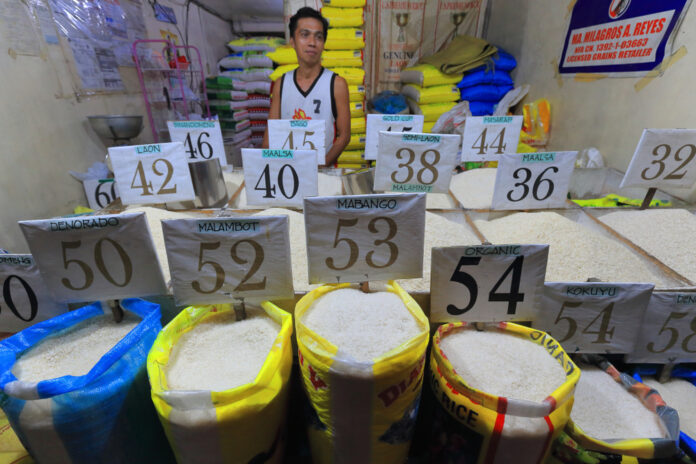The Federation of Free Farmers (FFF) on Wednesday said proposals by the National Economic and Development Authority and some business groups to cut the tariff on imported rice as response to the escalating price of the commodity will only depress the price of palay or unmilled rice at farm gates.
According to the group, only a “drastic overhaul” of the Rice Tariffication Law (RTL) will help untangle the myriad issues.
The FFF is the same group who earlier argued that Executive Order 39 and its price caps on rice were “unrealistically low”, forcing traders and millers to either stop selling, shift and rebrand rice to grades other than regular or well-milled rice to circumvent the mandate and still make money.
The FFF noted the recommendation to reduce the 35 percent rice tariff to 10 percent will supposedly allow the entry of cheaper imported rice to augment local stocks.
But Raul Montemayor, FFF national manager, warned such a cut will only depress palay prices by as much as P6 per kilo and present farmers with losses reaching P120 billion in just a year.
By his reckoning, the P10 billion allotted for the Rice Competitiveness Enhancement Fund (RCEF) under the RTL is awfully inadequate for the purpose.
These are on top of estimated foregone tariff revenue of another P12 billion a year based on current declared import value of 3 million tons of imported rice.
“The RCEF funds will not be enough and must be increased and new support programs have to be introduced and the funds spent properly,” he said.
He argued the focus should be on helping farmers produce more and at greater efficiency: “Give them a good price for their palay as we reduce our dependence on imports.”
Montemayor also claimed the rice importers have been undervaluing their shipments by an average 22 percent to lower their tariff liabilities.
He said in June this year alone, the declared landed cost of rice with 5 percent broken grains was only P22 per kilo compared to the P29 per kilo reference price at the Bureau of Customs.
“In effect, importers have already been paying a net tariff of almost 10 percent all along because of this practice of undervaluation,” Montemayor said.
In summary, he said the gains from tariff cuts will benefit only the importers and traders and only minimal benefit for consumers as importers bring in mostly premium grade rice which offer wider profit margins.
In a separate event, the Philippine Rice Industry Stakeholders Movement (PRISM) said discussions with rice retailers are underway to help member observe the rice price ceilings.
Rowena Sadicon, PRISM lead convenor, said on Wednesday the group is making sure that retailers are adequately supplied with have rice sold under capped prices.
Based on monitoring by the Department of Agriculture, the price of well-milled rice ranges from P45 to P53 per kilo and regular rice at P41 to P52 per kilo.
Imported well milled rice sell for P45 a kilo and regular rice for P43, slightly higher than the cap.
Imported rice sell at prices ranging from P53 to P65 for the special variety and P52 to P56 for premium.
For local rice, special variety sell at a range of P54 to P62 per kilo and premium from P49 to P60 per kilo.







